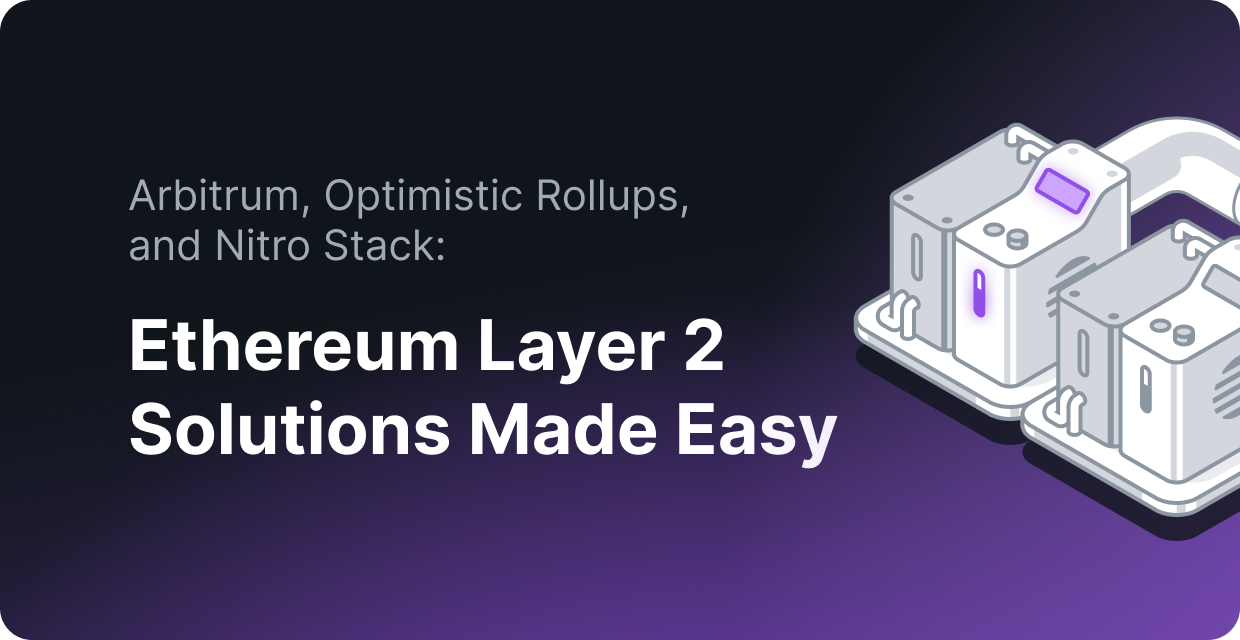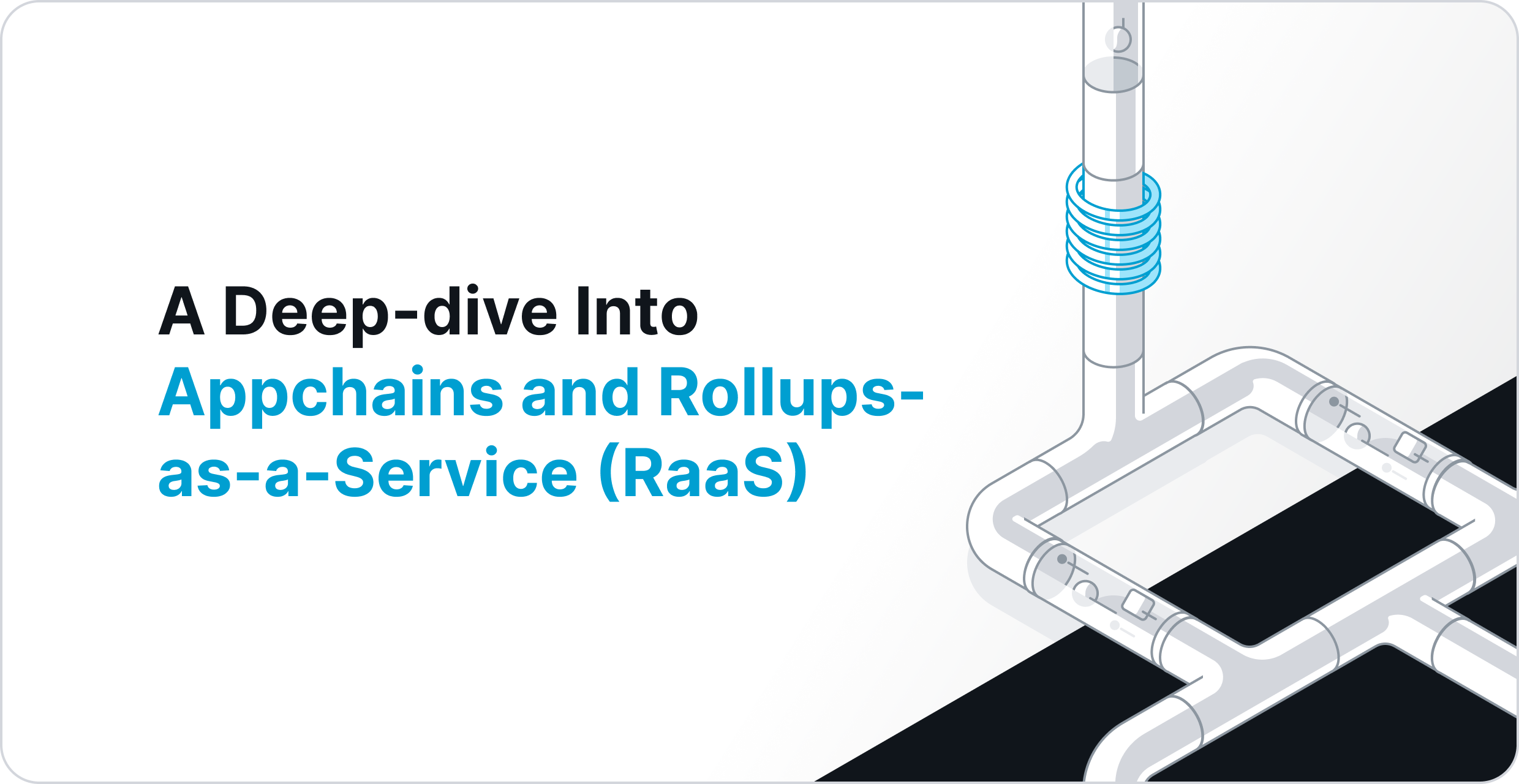Top 6 Rollups (RaaS) Providers
Explore the best rollup services for Web3 apps, offering enhanced scalability, reduced transaction costs, and seamless blockchain interactions. Discover top Layer 2 blockchain solutions that empower developers to build high-performance decentralized applications with improved efficiency, security, and interoperability across multiple blockchain ecosystems.
Get a blazing-fast RPC endpoint for trading, sniping, automation, and more

Rollups as a Service
by QuickNode

Rollups
by Alchemy

Rollup as a Service
by AltLayer

Rollup as a Service
by Gelato
RaaS
by Caldera

Rollup Platform
by Conduit
Rollups with QuickNode
What are Rollups or Rollups As a Service (RaaS)?
Rollups are a way to make crypto transactions faster and cheaper by processing them off the main blockchain. This introduction will walk you through what rollups are, their benefits, different types, and their real-world applications.
Key Takeaways
Rollups are a Layer 2 solution that processes transactions off-chain, increasing efficiency and reducing costs while maintaining security.
There are two main types of rollups: Optimistic rollups, which focus on speed and allow users to challenge transactions, and ZK-rollups, which prioritize privacy with faster withdrawal times.
Rollups enhance transaction throughput and lower fees, making them ideal for applications in DeFi, gaming, NFTs, and payment systems, despite facing technical challenges that need to be addressed.
Understanding Rollups
Rollups are a Layer 2 solution designed to alleviate the computational and storage demands on primary blockchain networks. Processing transactions off-chain and submitting only the final results to the main blockchain, rollups enhance transaction efficiency and significantly reduce costs. This method not only speeds up transactions but also makes the entire process more cost-effective.
The magic behind rollups lies in their use of cryptographic proofs to verify the correctness of off-chain transactions. Before the final states are submitted to the Layer 1 chain, these proofs ensure that everything is accurate and secure. This process maintains the security of the main blockchain while providing the benefits of faster transaction speeds.
Rollups play a crucial role in decentralized finance (DeFi), ensuring scalability, security, and reliability. Leveraging the main blockchain’s security for transaction data storage, rollups offer a robust solution that combines efficiency and security.
Types of Rollups
There are two main types of rollups: Optimistic rollups and Zero-Knowledge (ZK) rollups. Each type has its unique approach and benefits, catering to different needs within the blockchain ecosystem.
Optimistic rollups operate under the assumption that all transactions are valid, which allows for rapid processing. Users have a set period, typically one week, to challenge any fraudulent transactions. This method balances speed with security, offering a swift transaction handling system while still providing a dispute resolution mechanism.
ZK-rollups utilize Zero-Knowledge proofs to validate transactions while preserving user privacy. Unlike Optimistic rollups, ZK-rollups allow users to withdraw their funds with shorter waiting times. The launch of zero-knowledge rollups like zkSync Era and Polygon’s zkEVM in 2023 marked significant advancements in enhancing blockchain security and privacy.
Both types have their strengths and are being continuously developed to meet the growing demands of the blockchain community. Whether you prioritize speed or privacy, there is a rollup solution tailored to your needs.
How Rollups Work
Rollups take transactions off the main blockchain, process them, and condense the results into a single summary before sending it back to the Ethereum network. Bundling multiple transactions into a single batch significantly enhances throughput.
The sequencer is a critical component of rollup operations. The sequencer batches user transactions and publishes them to the Layer 1 blockchain, facilitating both soft and hard finality. This role is vital for maintaining the efficiency and reliability of the rollup process.
Only essential data from processed off-chain transactions is returned to the Ethereum mainnet, significantly reducing storage requirements. The Ethereum main chain then verifies the summarized data to ensure the legitimacy of the transactions through cryptographic methods. This approach saves time and computational resources while ensuring data integrity.
Benefits of Using Rollups
One of the most significant benefits of using rollups is the reduction in transaction fees. Processing numerous transactions off the main blockchain allows rollups to drastically lower costs. Processing batches of transactions together instead of charging fees individually achieves this efficiency.
Rollups also allow for a substantial increase in transaction throughput, enabling thousands of transactions per second compared to Ethereum’s typical capacity. This enhancement in throughput is crucial for the scalability of blockchain networks, allowing more transactions to be processed simultaneously.
During network congestion, rollups alleviate the burden on the main blockchain by handling more transactions off-chain. This capability is essential for maintaining the smooth operation of blockchain networks, especially during peak times.
Implementing Rollups in Your Project
Integrating rollups into a blockchain project requires compatibility with the existing Layer 1 infrastructure, typically using Ethereum’s security and consensus mechanisms. This step is crucial for maintaining the integrity and security of the project.
Transaction fees in rollups are generally denominated in the native asset of the Layer 1 blockchain, maintaining consistency and facilitating user experience. This approach ensures users can easily understand and manage their transaction costs.
A key design consideration when implementing rollups is choosing the right sequencing model. The model should provide both speed in transaction processing and security against potential failures. This balance is vital for the successful deployment of rollups in any blockchain project.
Real-world Applications of Rollups
Rollups have found numerous applications across various industries, significantly enhancing the efficiency of blockchain technology. In decentralized finance (DeFi), rollups facilitate faster and cheaper transactions on platforms like Uniswap and Synthetix. This capability makes DeFi more accessible to a broader audience.
In the gaming industry, rollups enable quick and cost-efficient in-game transactions, as seen in projects like Axie Infinity and LootRealms. This application provides a seamless gaming experience, where players can transact without worrying about high fees or delays.
Rollups reduce expenses related to minting and trading NFTs, exemplified by platforms like OpenSea and Rarible. This cost reduction makes NFT trading more accessible and attractive to users.
Additionally, payment systems utilizing rollups, such as Loopring and StarkPay, make microtransactions and international payments more feasible. This capability opens up new possibilities for faster and more cost-effective financial transactions.
Common Challenges and Solutions
Despite their advantages, roll ups come with technical challenges, mainly due to their complexity in design and implementation. Common issues include transaction verification problems and potential delays due to network congestion.
Better monitoring tools and optimization techniques can help alleviate these challenges. These solutions are crucial for ensuring efficient use of rollups and seamless transactions.
Addressing these challenges is crucial for the widespread adoption of rollups in the blockchain ecosystem. By focusing on these solutions, developers can create more robust and reliable rollup implementations.
Frequently Asked Questions
What are rollups in blockchain technology?
Rollups are a Layer 2 solution that efficiently processes transactions off-chain, submitting only the final results to the main blockchain to reduce costs and enhance performance. This technology plays a crucial role in scaling blockchain operations.
What are the main types of rollups?
The main types of rollups are Optimistic rollups and ZK-rollups, which differ in their methods of transaction validation and processing. Understanding these distinctions can help you choose the right solution for your blockchain needs.
How do rollups reduce transaction fees?
Rollups effectively lower transaction fees by consolidating multiple transactions off the main blockchain into a single batch, which reduces the overall cost. This streamlined approach not only makes transactions cheaper but also enhances scalability.
What industries benefit from the use of rollups?
Industries like decentralized finance (DeFi), gaming, NFT platforms, and payment systems significantly benefit from the efficiency and cost reductions that rollups offer. These sectors leverage rollups to enhance performance and reduce transaction fees.
What are some common challenges in implementing rollups?
Implementing rollups often faces challenges such as technical complexity, transaction verification issues, and delays from network congestion. Addressing these challenges requires improved monitoring tools and optimization techniques.
Read more

Arbitrum, Optimistic Rollups, and Nitro Stack
In this guide, we'll explore Arbitrum and its Nitro technology, highlighting its benefits for developers and businesses, and how QuickNode simplifies the deployment of these rollups.
Guide - November 14, 2024

A Deep-dive Into Appchains and Rollups-as-a-Service (RaaS)
Appchains are bringing composable scalability to web3 and RaaS is accelerating appchain development. Learn more.
Tool - November 29, 2024

Best Practices for Launching Your L2 Rollup
Learn how to choose the best RPC provider for rollups by evaluating factors like reliability, scalability, cross-chain compatibility, support, and pricing.
Blog - March 23, 2024
